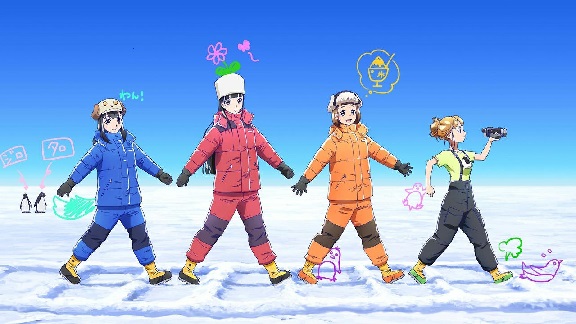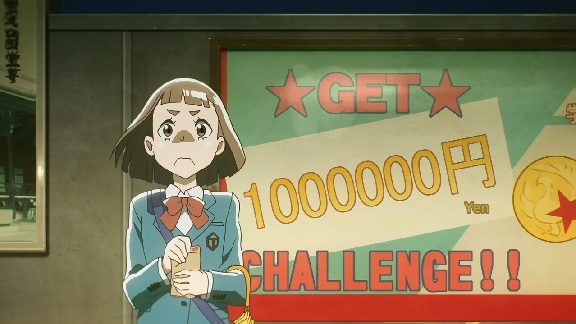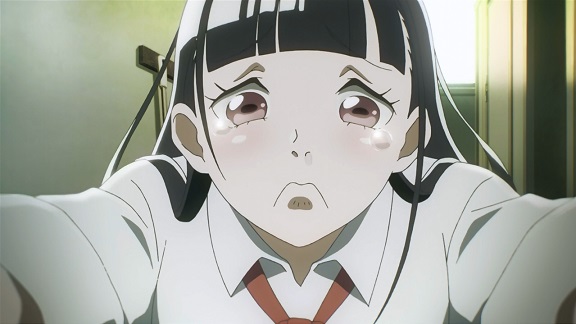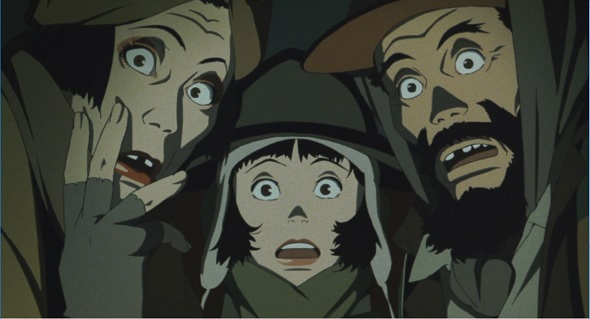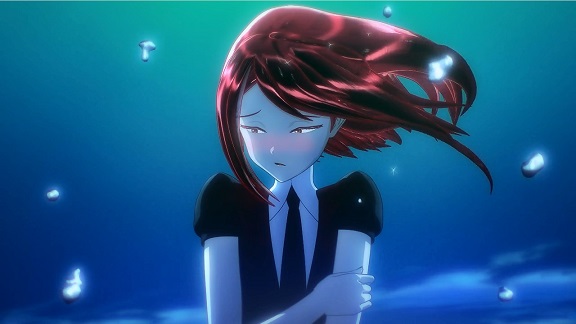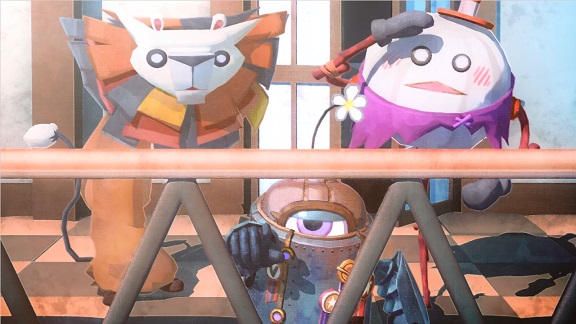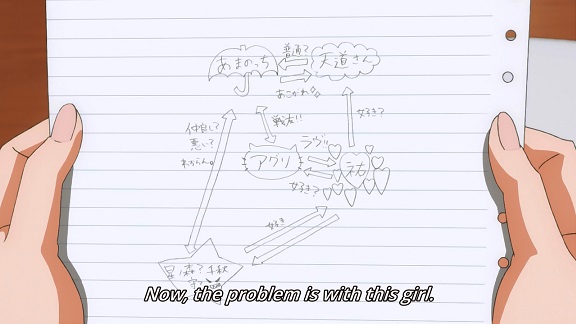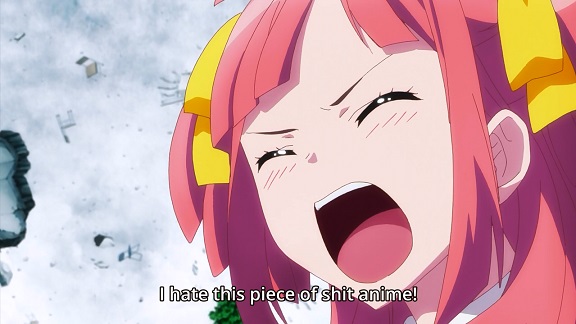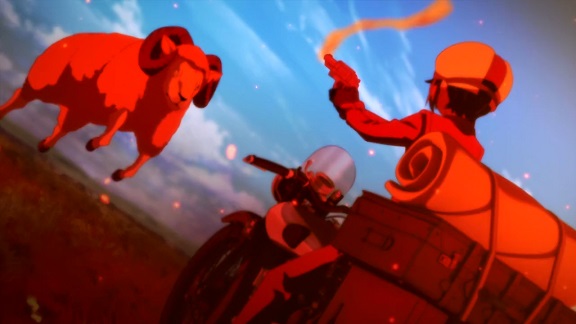Because she’s cute, Ohsawa Yuu stalks her standoffish classmate Koizumi-san and discovers she’s really, really into ramen.
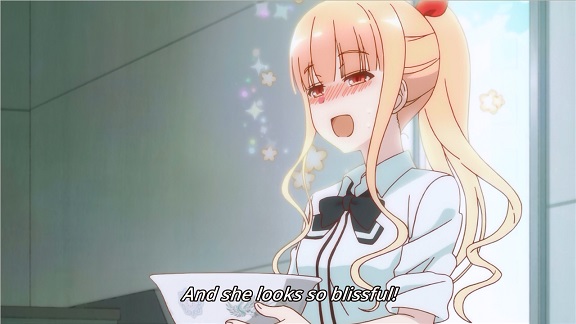
I’ve been reading the manga of this and liking it, so I was looking forward of how it would be adapted. To be honest I expected this would’ve been a short, rather than a full length series, because the manga chapters are rather short as well and mostly standalone, so perfect for a five or eight minute short. What they’ve done instead is adapt 3-4 chapters per episode, if the first episode is an indication. I’m not sure how that would work long time. This time we got three stories about Koizumi going to eat ramen and Yuu stalking, then joining her. It could get a bit dull. Luckily I know the manga starts to mix things up quickly, introducing more characters for Koizumi to play off.
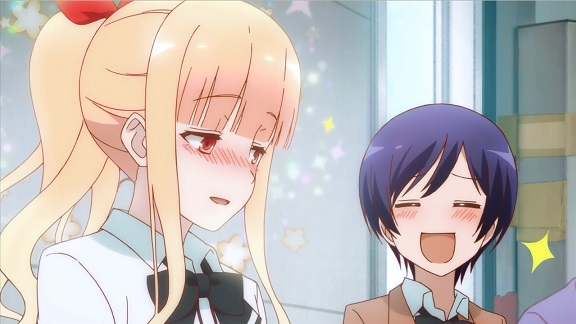
So far the characters are a bit one note. Koizumi-san is your archetypical cool beauty loner, with little to no interest in anything other than ramen, only coming alive if she’s eating it or explaining about what’s she’s eating. Yuu is a bit better, a cheerful, optimistic girl with a thing for cute girls that’s more than a little bit gay. Every story in this episode has Yuu attempting to talk to/chat up Koizumi-san, her rebuffing Yuu’s approach, then going to eat ramen, at which Yuu joins her and gets her to open up just a little bit by getting her to talk about ramen.
Compared to Sora yori mo Tooi Basho, Ramen Daisuki Koizumi-san is a much more conventional slice of moe anime, competently done but not yet with much to distinguish itself from any other slice of moe anime. The character designs are cute, the animation is all right without anything special and Koizumi-san’s blissgams are nowhere near as interesting as those in e.g. Food Wars. At the moment Ramen Daisuki Koizumi-san is more comfort food than haute cuisine: great if you like this sort of thing, skippable otherwise.
